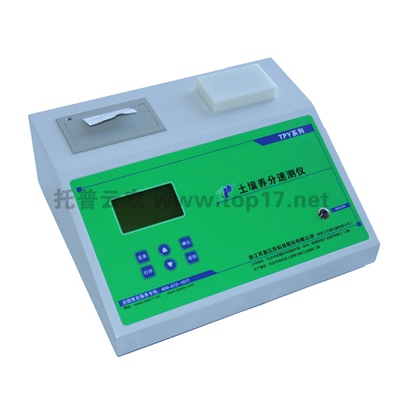Soil measuring instrument guides the symptomatic "fertilization" science to increase production
Since the beginning of this year, with the gradual development of the arable land quality protection and upgrading project, relevant local departments have guided farmers to adjust and optimize the planting structure, vigorously promote deep ploughing, conservation tillage, straw returning and other technologies to improve the soil structure, and on this basis. Soil tools such as soil measuring instruments are used to promote soil testing and formula fertilization, to guide users to scientific fertilization, and to improve the fertility of cultivated land, thereby increasing crop yield. This effective project has enabled the majority of farmers to recognize the importance of the quality of cultivated land and truly enjoy the economic results brought about by scientific production. Guiding users to apply scientific fertilization is an important part of improving the quality of cultivated land. Excessive use of chemical fertilizers is an important cause of salinization of traditional agricultural land, soil nutrient imbalance, soil compaction, and decline in quality and yield of agricultural products. Therefore, scientific fertilization not only helps to improve soil quality, but also reduces agricultural production costs. To achieve the goal of weight loss and efficiency improvement, the promotion of soil testing and formula fertilization technology is an important task in various regions at present, and the scientific instrument essential for carrying out this work is the soil measuring instrument. The soil measuring instrument is also called the soil testing formula fertilizing instrument, which is a professional instrument developed for soil nutrient detection. Using the soil measuring instrument to measure the soil sampling test, according to the test results to determine the soil quality, and then targeted fertilizer, symptomatic "fertilizer", equivalent to teaching students in accordance with the material, can not only meet the needs of growing crops on the land, so that agricultural products are high-yield, Stable production and good quality can improve soil quality and achieve a benign agricultural cycle. In addition, the soil testing formula should run through the whole growth period of the crop. Therefore, the use of the soil measuring instrument can help the agricultural workers to test and adjust at any time, give full play to the scientific guiding role, and consolidate the agricultural production results. Strive to embark on a new path of ecological and economic interaction and win-win. Iron-based alloy powder is commonly used in plasma transfer arc welding (PTAW) due to its excellent mechanical properties and high resistance to corrosion and heat. This type of powder is typically composed of iron as the base metal, along with various alloying elements such as nickel, chromium, molybdenum, and tungsten. Fe Alloy Powder,Stainless Powder,High Temperature Powder,Iron Base Pta Welding Powder Luoyang Golden Egret Geotools Co., Ltd , https://www.xtccarbide.com
The specific composition of the iron-based alloy powder may vary depending on the desired properties and application requirements. For example, adding nickel can increase the strength and toughness of the weld, while chromium enhances the corrosion resistance. Molybdenum and tungsten are often added to improve the high-temperature strength and creep resistance of the weld.
Iron-based alloy powders for PTAW are available in various particle sizes, typically ranging from a few micrometers to several hundred micrometers. The powder is usually fed into the plasma arc through a powder feeder, which ensures a controlled and consistent supply of powder during the welding process.
During PTAW, the powder is melted and deposited onto the workpiece, forming a weld bead. The high energy plasma arc provides the heat necessary to melt the powder and the base metal, creating a strong and durable weld joint.
Overall, iron-based alloy powder for plasma transfer arc welding offers excellent weldability, high mechanical properties, and resistance to corrosion and heat, making it suitable for a wide range of applications in industries such as aerospace, automotive, and power generation.